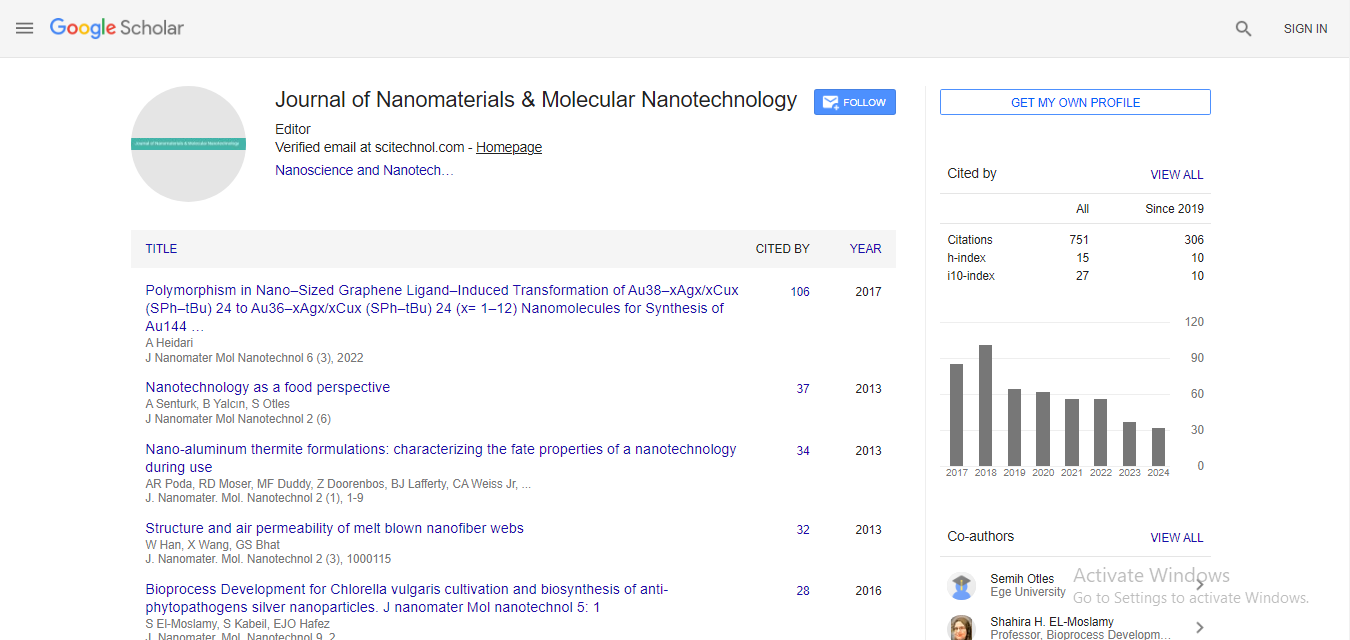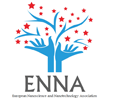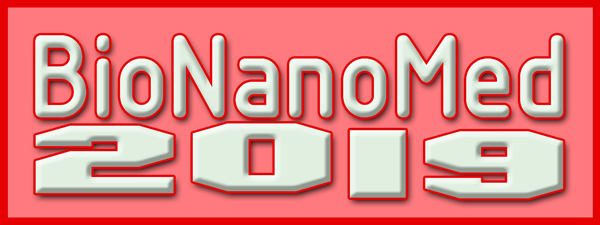Commentary, J Nanomater Mol Nanotechnol Vol: 13 Issue: 6
Sustainable Nanolithography: Green Approaches in Nano-Patterning Technologies
Silva Denilson*
1Department of Nuclear Chemistry, State University of Paraiba, Paraiba, Brazil
*Corresponding Author: Silva Denilson,
Department of Nuclear Chemistry, State
University of Paraiba, Paraiba, Brazil
E-mail: denil.lva@sup.br
Received date: 22 November, 2024, Manuscript No. JNMN-24-156140;
Editor assigned date: 25 November, 2024, PreQC No. JNMN-24-156140 (PQ);
Reviewed date: 09 December, 2024, QC No. JNMN-24-156140;
Revised date: 16 December, 2024, Manuscript No. JNMN-24-156140 (R);
Published date: 24 December, 2024, DOI: 10.4172/2324-8777.1000445
Citation: Denilson S (2024) Sustainable Nanolithography: Green Approaches in Nano-Patterning Technologies. J Nanomater Mol Nanotechnol 13:6.
Description
Nanolithography plays a central role in the production of nanostructures for a wide range of applications, including semiconductor devices, sensors and drug delivery systems. The most widely used conventional lithographic techniques, such as photolithography, electron beam lithography (e-beam) and nano imprint lithography, often rely on toxic chemicals, hazardous solvents and high-energy processes. These traditional methods pose a significant environmental challenge, especially as the scale of nanomanufacturing increases. Given the rapid growth of nanotechnology industries, it has become essential to study greener alternatives in nanolithography. Sustainable nanolithography aims to reduce harmful emissions, minimize waste generation and use ecofriendly materials, all while ensuring the precision and functionality required by modern nanofabrication.
Traditional photoresists used in photolithography are composed of toxic and hazardous materials, which can result in significant environmental and health risks. In response, researchers have been studying alternative, eco-friendly photoresists. Bio-based resists, made from renewable resources such as natural polymers, have gained attention as a promising green solution. These photoresists not only reduce the reliance on harmful chemicals but also ensure biodegradability, minimizing long-term environmental impact. Nano Imprint Lithography (NIL) is a developing technique that has shown great potential in terms of both precision and sustainability. NIL involves the mechanical pressing of a mold into a thin layer of resist material, creating nanoscale patterns. This process does not require high-energy light sources like photolithography, significantly reducing energy consumption.
NIL also allows for the use of simpler, less toxic materials, such as UV-curable resins, reducing the reliance on solvents and hazardous chemicals. The process is highly efficient in terms of throughput and material usage, resulting in minimal waste generation. As a result, NIL is regarded as one of the most environmentally sustainable alternatives to traditional lithographic techniques. High energy consumption is a major concern in traditional nanolithography techniques. For instance, photolithography requires high-energy Ultra Violet (UV) light sources and e-beam lithography often demands lengthy exposure times, which further increases energy usage. To address this issue, researchers are focusing on developing low-energy alternatives.
The solvents and chemicals used in nanofabrication processes are often toxic, contributing to hazardous waste streams. In response, researchers are turning to greener solvents derived from natural sources, such as plant-based oils and water-based solutions. These alternatives reduce the environmental and health risks associated with traditional chemical treatments. Furthermore, advances in the development of solvent-free patterning techniques are minimizing the need for hazardous chemicals altogether. Dry etching and plasma assisted techniques are developing as alternatives to wet chemical processes, offering a cleaner, more sustainable approach to patterning materials at the nanoscale.
Traditional nanolithography processes often produce large amounts of chemical waste, including spent photoresists, solvents and etching gases. Green approaches in nanolithography focus on minimizing waste through more efficient material use and recycling. For example, recycling of photoresists and the reuse of molds in NIL can significantly reduce the amount of waste generated. While progress has been made in sustainable nanolithography, several challenges remain. One of the primary obstacles is the need to balance sustainability with the precise performance requirements of nanofabrication. Another challenge is the scalability of sustainable nanolithography techniques. Many of the green methods developed so far have been tested primarily in laboratory settings and their integration into large scale manufacturing processes requires further development. Researchers are working to improve the scalability of sustainable approaches while maintaining cost-effectiveness and highquality output.
Conclusion
Sustainable nanolithography is an essential step toward minimizing the environmental presence of nanotechnology production. With the growing demand for more eco-friendly manufacturing practices, the development of green approaches in nano patterning technologies has become a priority for researchers and industries alike. By advancing eco-friendly materials, reducing energy consumption and minimizing waste, sustainable nanolithography hopeful to help drive the future of nanotechnology in a more environmentally responsible direction.
 Spanish
Spanish  Chinese
Chinese  Russian
Russian  German
German  French
French  Japanese
Japanese  Portuguese
Portuguese  Hindi
Hindi 



